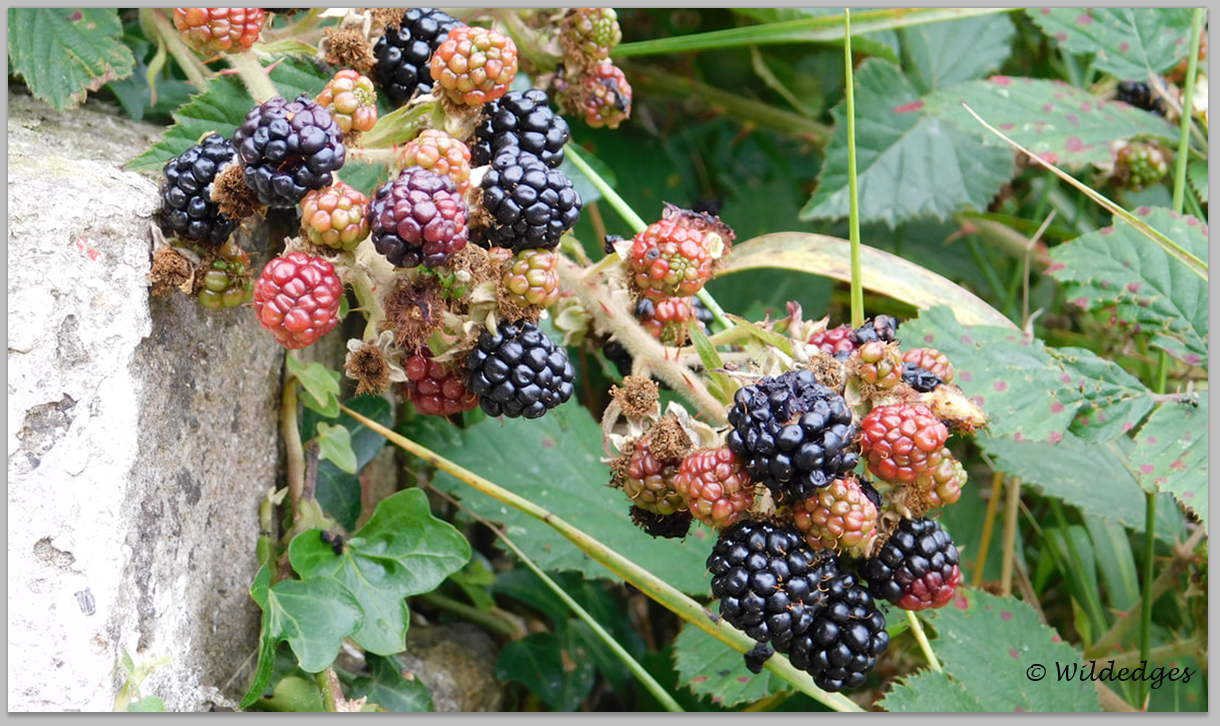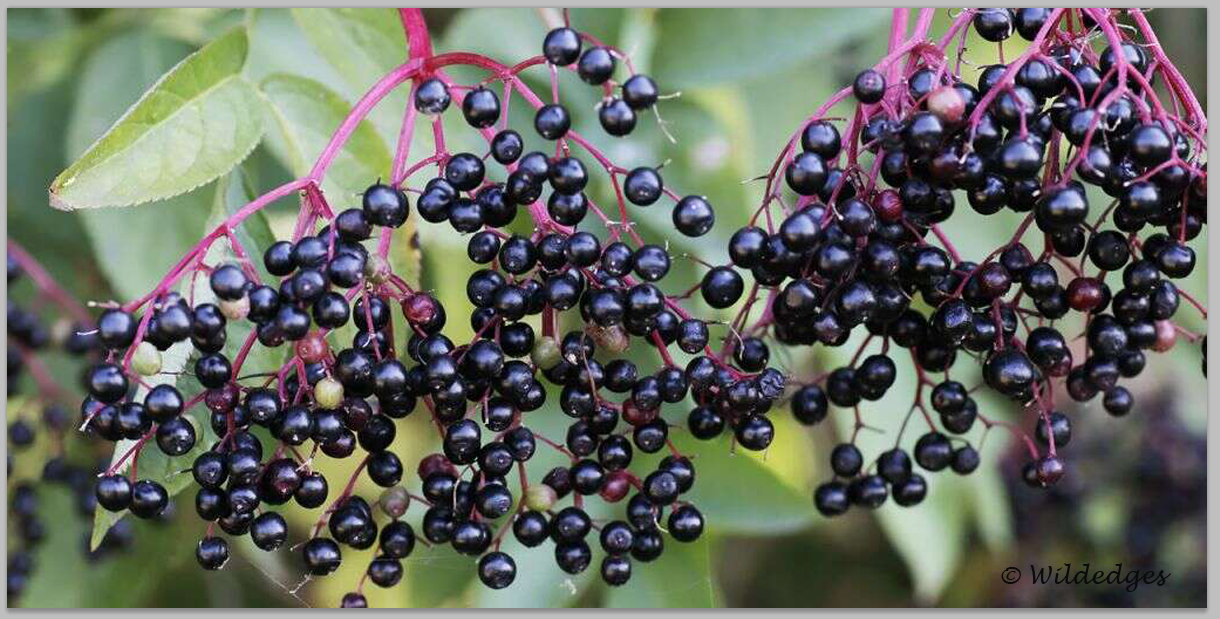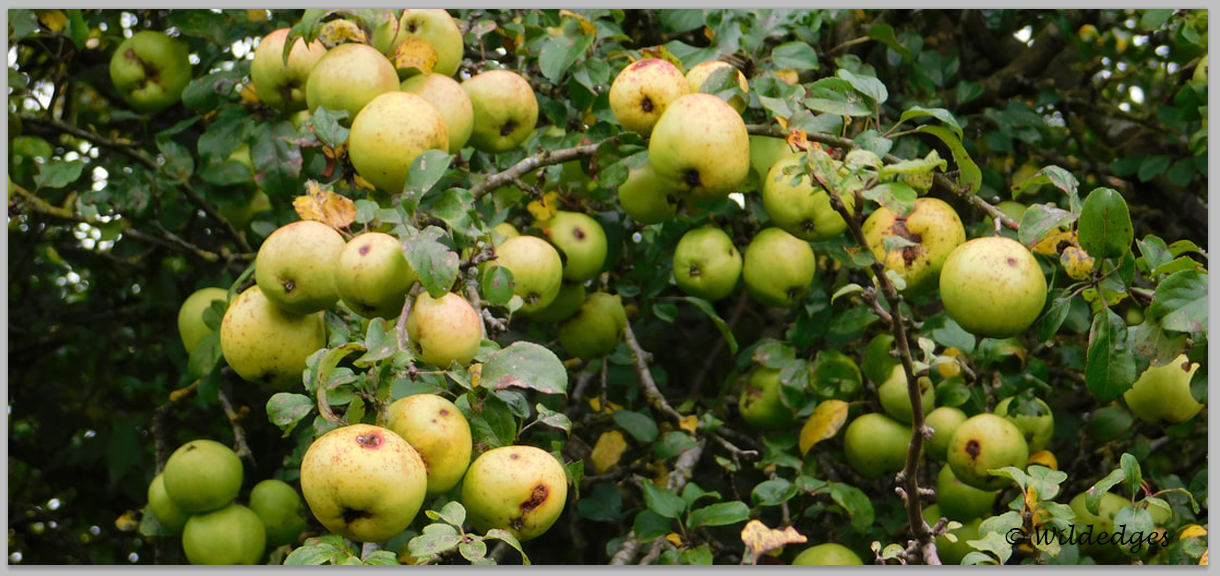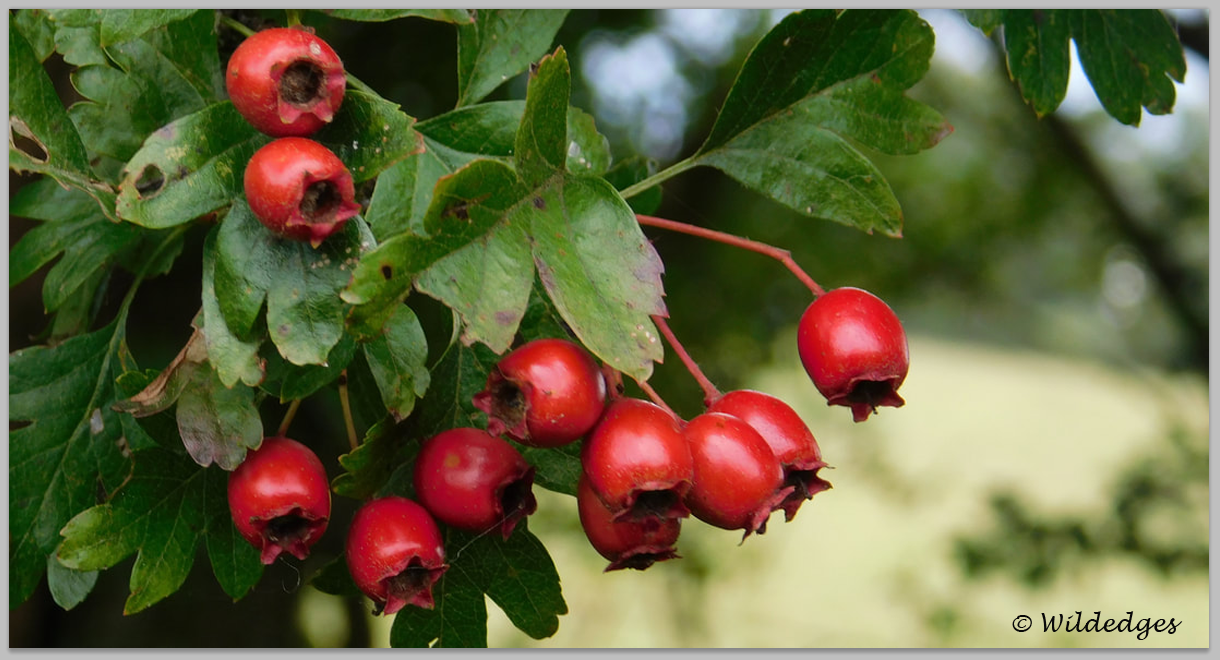|
In late August and September, before the flails decimate the hedgerows, take a walk along a boreen or field edge and see the amazing abundance of fruit, berries and nuts that nature provides for the wild things of the world. This year has been a really good year for native fruit and you too can use this bounty by collecting some of the fruit to make jam. but first a little bit about the fruiting shrubs and vines of the countryside Blackberries We have become so used to convenience shopping for plastic wrapped fruit that the custom of blackberry picking is being lost to this generation. A ramble along the country hedgerows with a basket for the spoils, face and fingers stained with juice is a memory that will be recalled time and time again. Blackberries (Rubus fruiticosa) is a native shrub that sprawls and crawls and climbs and if left to its own devices would colonise field margins very quickly and effectively. Legend says that an abundance of blackberries is a sure sign of a severe winter ahead and some farmers don't like bramble and blackberries on their land, believing that faeries live beneath the branches. Rose-hips These are the fruit of the dog rose - Rosa canina - that fills the hedges with pink and white flowers in the spring and summer. Hips are plump, ripe and plentiful at the moment though too few people recognise them as edible (I doubt the wildlife would mind if people don't pick them). You don't have to go too far back in time, however, to when they were valued more highly, rose-hip syrup was often given to children, a great way to introduce Vitamin C, they are loaded with the stuff and also rose-hip tea, with a delicious floral taste, has been used as a herbal remedy for centuries. Elderberries These are the berries left over from the lemony scented, white frothy flowers you may have collected earlier in the year to make a light and refreshing cordial. The berries and flowers of elderberry are packed with antioxidants and vitamins that may help to boost your immune systems. They have been used to reduce inflammation, lessen signs of stress and maybe help to protect your heart. The berries can be used to make a cordial or syrup which some people recommend as a natural way to help to lessen the severity of cold and flu symptoms. Elderberries should not be eaten raw but should always be cooked, they make a delicious syrup to pour over ice-cream, a warming winter wine and can be added to pies and crumbles. It was said that to wear or carry Elder wood, leaves, flowers or berries would protect you from attack. though the stories never tell from what. Sloes Sloes are the fruit of the blackthorn (Prunus spinosa), a shrub or small tree that is widespread and abundant in woods and hedgerows throughout Ireland. All parts of the plant are said to have medicinal properties but possibly the most common use is in the production of Sloe Gin. The sloes were traditionally harvested in September or October after the first frost has 'bletted' the fruit to remove some of the acidity, (This can be simulated today by freezing the fruit after harvesting). Pick enough berries plus a little extra and pick a mixture of berries and fruit. If the area around you has old hedges you should be able to collect, hawthorn, rose hips, elderberries, sloes, wild gages, both black and red blackberries (the red fruit contain more pectin which helps to set the jam), crab apples, bullaces, wild gooseberries and raspberries if you can find any and hazelnuts. Hedgerow Jam - The Ingredients This is a new recipe for me but it is using tried and tested fruit and cooking methods so we'll see what you think - if you decide to make it 225gm - rose hips/ 450gm - blackberries/ 225gm - haws/ 450gm - elderberries/ 225gm - sloes/ 115gm - hazelnuts/ 225gm - rowan berries (you can substitute raspberries or gooseberries here)/ 450gm - crab or wild apples (substitute orchard apples if you cannot find any wild ones)/ 1kg - Sugar Wash all the fruit well.
Put rose hips, haws, rowan berries, sloes & chopped crab apples into pan, add water to cover, cook until tender. Sieve & weigh the pulp. Put pulp into pan with blackberries, elderberries, and chopped nuts, simmer for 15 minutes. Add 1kg sugar plus extra sugar the weight of the hip pulp. Cook over a low heat until sugar has dissolved, then boil rapidly until setting point is reach. Pour into sterilised jars and seal when cool. Add a pretty jam jar cover, a hand written label and a pretty ribbon and they make great presents
0 Comments
|
WildEdges
A haven of quiet countryside highlighting issues affecting the natural world. Categories
All
|








 RSS Feed
RSS Feed